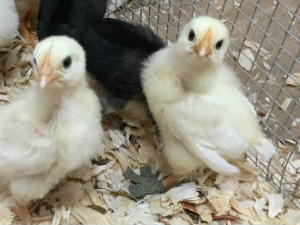 The American Bresse, Black Copper Marans, and barnyard mix chicks are just over a week old. They’re growing fast – feathers are coming in already.
The American Bresse, Black Copper Marans, and barnyard mix chicks are just over a week old. They’re growing fast – feathers are coming in already.
We recently noticed that one of the Bresse chicks has crooked toes. It’s odd because all of the chicks were fine at hatching, and we’ve seen them multiple times a day. Crooked toes can be caused by incubation issues, genetics, or other factors; in any case, we knew we needed to get the toes straightened out as soon as possible. That’s where the “flippers” come in. Continue reading “Chicks With Flippers”

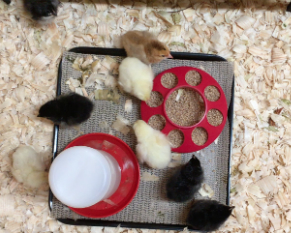 Our two groups of incubator eggs hatched this weekend, and we now have 16 fluffballs running around the brooder. Some of the eggs were shipped, and the hatching results were mediocre at best. Here’s how it shook out:
Our two groups of incubator eggs hatched this weekend, and we now have 16 fluffballs running around the brooder. Some of the eggs were shipped, and the hatching results were mediocre at best. Here’s how it shook out: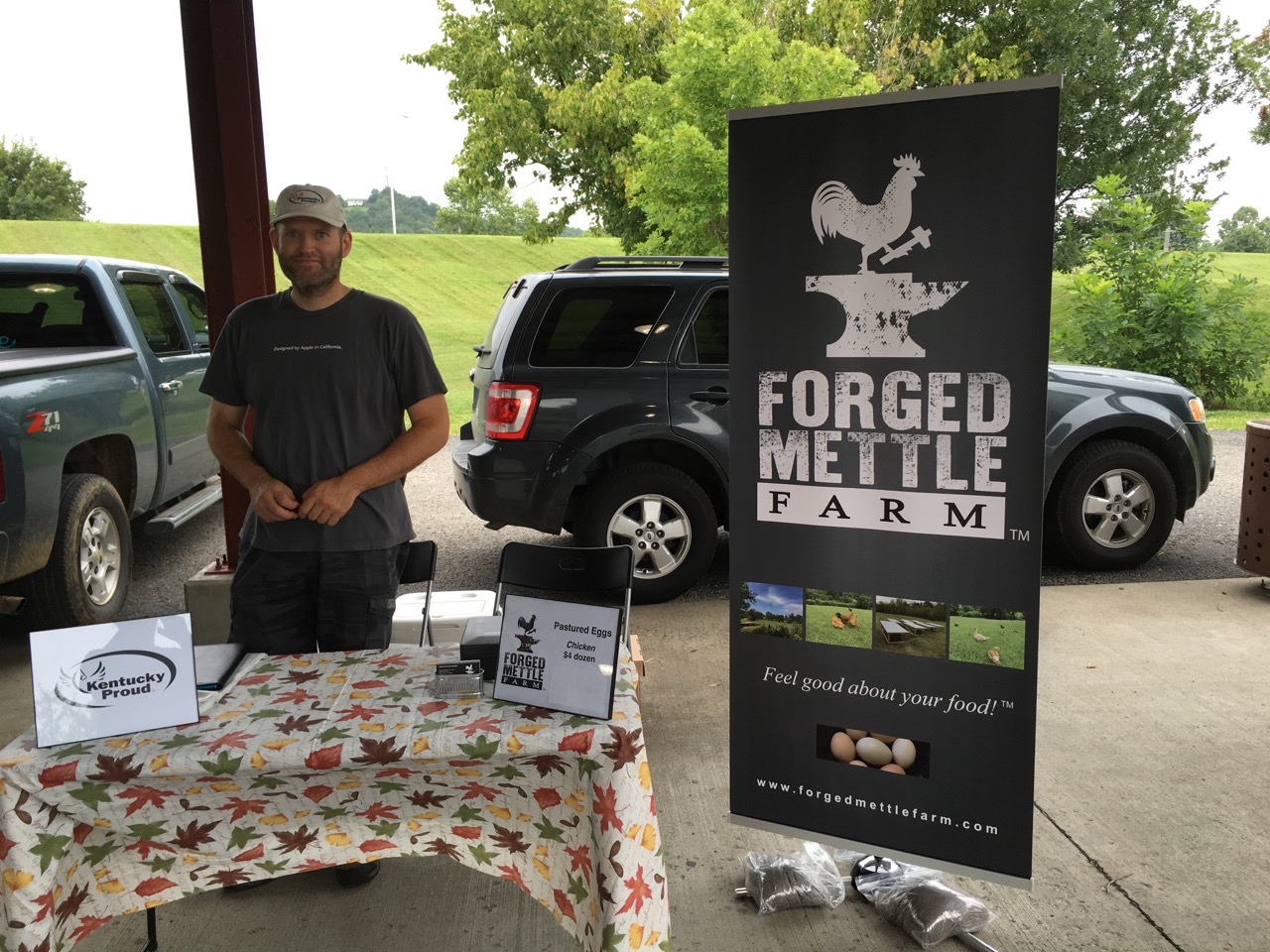 We’ve been shopping at farmer’s markets for years, in many cities and states. One of the parts we particularly enjoy is the opportunity to meet the farmers. We’ve found great diversity among the individuals who farm: some grew up farming, others are career changers, and still others begin after retirement. One common thread, however, is pride in their products.
We’ve been shopping at farmer’s markets for years, in many cities and states. One of the parts we particularly enjoy is the opportunity to meet the farmers. We’ve found great diversity among the individuals who farm: some grew up farming, others are career changers, and still others begin after retirement. One common thread, however, is pride in their products.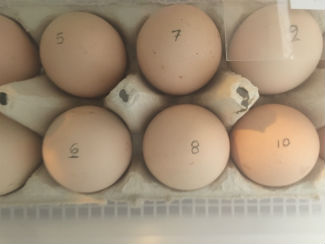 In addition to the Black Copper Marans eggs we put in the incubator a couple of days ago, we just started incubating some American Bresse eggs. While we have, to this point, raised dual-purpose chickens primarily for eggs, these are intended to be primarily meat chickens.
In addition to the Black Copper Marans eggs we put in the incubator a couple of days ago, we just started incubating some American Bresse eggs. While we have, to this point, raised dual-purpose chickens primarily for eggs, these are intended to be primarily meat chickens.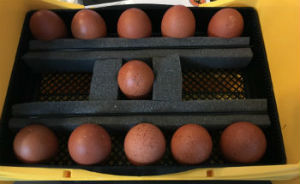 So, we have the fancy yellow incubator and the new hatcher just sitting idle in the gym/feed storage/sometime-duckling-brooder room downstairs. After the first hatcher fiasco with the still-air wafer thermostat incubator, we upgraded to a digital forced air model that seems to hold temperature much better than the other one did. Shockingly, the new hatcher hasn’t even been used yet. Seems like we should be getting our money’s worth out of this equipment. Guess it’s time to hatch some eggs!
So, we have the fancy yellow incubator and the new hatcher just sitting idle in the gym/feed storage/sometime-duckling-brooder room downstairs. After the first hatcher fiasco with the still-air wafer thermostat incubator, we upgraded to a digital forced air model that seems to hold temperature much better than the other one did. Shockingly, the new hatcher hasn’t even been used yet. Seems like we should be getting our money’s worth out of this equipment. Guess it’s time to hatch some eggs!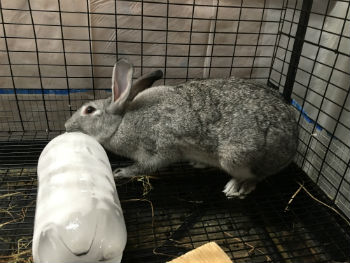 When heat indices near or surpass triple digits – like it has this week – it becomes dangerous for many animals (including farm animals) and stressful for farmers committed to ensuring the health and welfare of their livestock.
When heat indices near or surpass triple digits – like it has this week – it becomes dangerous for many animals (including farm animals) and stressful for farmers committed to ensuring the health and welfare of their livestock.